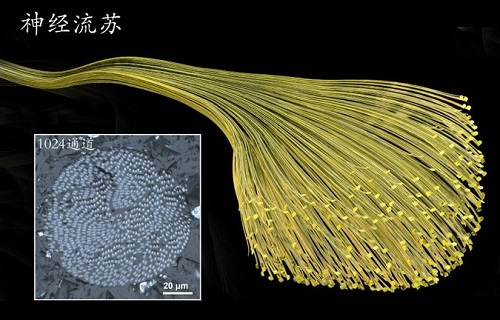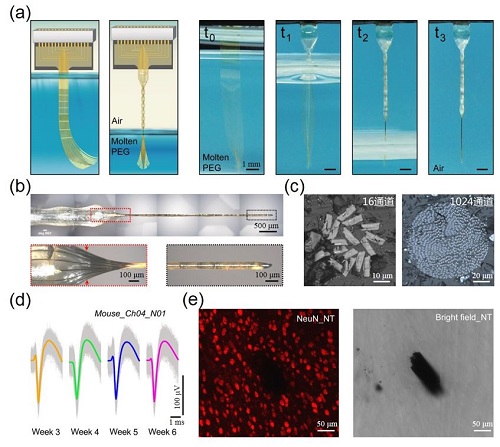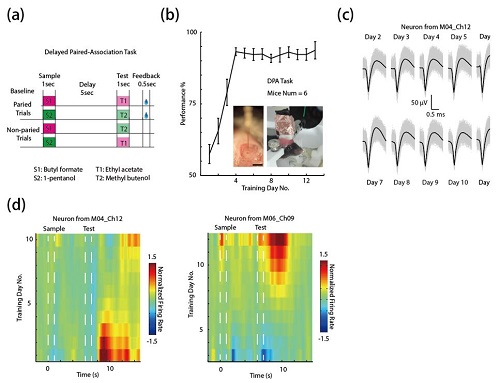Time:2019-04-01
Researchers at the National Center of Nanoscience and Technology of China (NCNST) and the Institute of Neuroscience (ION), Chinese Academy of Sciences, have developed an ultrasmall and flexible Neurotassel that can record neuron firing in awake mice for long periods of time. The researchers described their findings in a research article published on Mar. 27 in Science Advances, 2019, 5, eaav2842.
The Neurotassel consists of an array of flexible and high–aspect ratio microelectrode filaments that can spontaneously assemble into a thin fiber through elastocapillary interactions when withdrawn from a molten, tissue-dissolvable polymer (e.g.Poly(ethylene glycol) (PEG)). Moreover, the Neurotassel can be scaled up to 1024 neurite-scale microelectrode filaments, each with a cross-sectional footprint of 3 × 1.5 μm2, to form an implantable fiber with a total diameter of ~100 μm. These microelectrode filaments are the smallest neural probes that have ever been reported.

One of the key problems with conventional neural probes based on silicon or metal wires is their large size and mechanical mismatch with neural tissues, leading to serious tissue damage and probe failure in long-term studies. Thus, it has been very challenging for conventional neural probes to track individual neurons for more than a few days. In contrast, the ultrasmall sizes and high flexibility of the Neurotassels allow them to form stable interfaces with neural tissues. The researchers have shown that the neuronal cells stayed healthy around implanted Neurotassels for months. As a result, Neurotassels can stably record the activities of the same population of neurons for long periods of time.

(a) Elastocapillary self-assembly of Neurotassel; (b) Assembled Neurotassel/PEG fiber; (c) Cross-sectional view of assembled 16- (left) and 1024-channel (right) Neurotassel/PEG fibers, respectively; (d) Stable recording of neuronal activity by Neurotassel in mouse brain; (e) Minimal neuronal cell loss around chronically implanted Neurotassel.
As a result, during mice were trained with an olfactory working memory task, Neurotassels can stably record the activities of the same population of neurons for longer periods of time compared with twisted-wire electrodes. Stably recording same group of neurons offers more details about how neurons changing firing properties along with the improvement of performance in a cognitive task.

(a) Schematic of the olfactory working memory task. (b) Performance of mice trained with the olfactory working memory task. (c) The waveforms of an example neuron stably recorded during the training process. (d) Heat map of the normalized firing rate for two example neurons. Each row represents the baseline-normalized firing rate of one training day.
The long-term recording stability, combined with their high scalability, makes the Neurotassels extremely suitable for chronic studies of large populations of neurons and also practical applications, such as brain-machine interfaces (BMI) and neuroprosthetics. The research received funding supports from the National Natural Science Foundation of China, the Chinese Academy of Sciences, and Shanghai Municipal Science and Technology Major Project.
 附件下载:
附件下载: